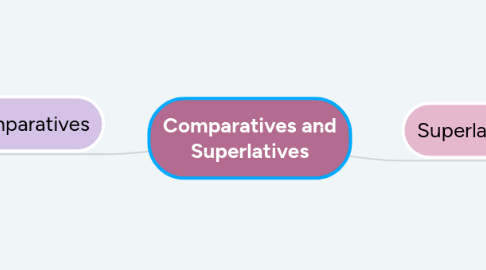
1. Comparatives
1.1. We use it when comparing two people or things with a disagreement.
1.1.1. Short adjectives
1.1.1.1. Form: (Adj+er) + than
1.1.1.2. If the penultimate letter is a vowel, we double the last letter and we add (er). Examples: hotter, bigger.
1.1.1.3. If the adjective ends with y, we replace it with i and add er. Example: funnier.
1.1.1.4. If the adjective ends with (e), we suffice to add (r). Example: cuter.
1.1.1.5. If the adjective ends with a valid letter preceded by two vowel letters, then we do not double the last letter. Example: greater.
1.1.2. Long adjectives
1.1.2.1. Form: more/less + adj + than
1.1.2.2. If the adjective consists of two or more syllables, precede it with (more). Example: more beautiful.
1.1.2.3. Some adjectives have two formulas for comparison. Example: narrow => narrower, more narrow.
1.1.3. Irrgular
1.1.3.1. Some adjectives change completely in comparison. Examples: good => better, bad => worse.
2. Superlatives
2.1. We use it to favor a person or thing over a group of people or things.
2.1.1. Short adjectives
2.1.1.1. Form: the + (adjective+est)
2.1.1.2. If the penultimate letter is a vowel, we double the last letter and we add (est). Examples: hottest, biggest.
2.1.1.3. If the adjective ends with (e), we just add (st). Example: cutest.
2.1.1.4. If the adjective ends with y, we replace it with i and add est. Example: funniest.
2.1.1.5. If the adjective ends with a valid letter preceded by two vowel letters, then we do not double the last letter. Example: greatest.
2.1.2. Long adjectives
2.1.2.1. Form: the + most/least + adjective
2.1.2.2. If the adjective consists of two or more syllables, precede it with (most). Example: most beautiful.
2.1.2.3. Some adjectives have two superlatives, for example: narrow => the narrowest, most narrow.
2.1.3. Irregular
2.1.3.1. Some adjectives change completely in preference. Examples: bad => worst, good => best.
